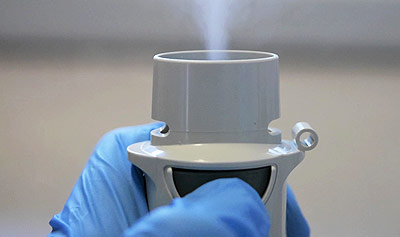How devices can grow pharma profits
7 August 2013
Devices can grow pharma profits in the following ways:
Increase drug value
New drug delivery devices can increase the value of a given drug. For example, sumatriptan is available in:
- Tablet format (e.g. Imigran/Imitrex),
- A pre-filled syringe (e.g. Imitrex STATdose),
- A needle-based autoinjector (e.g. Sun Pharma’s generic sumatriptan in the SHL DAI), and
- A needle-free autoinjector (e.g. Zogenix DosePro).
We can expect that the injectable versions may justify a higher price due to, for example, faster action. The needle-free version may justify a higher price still for patients that are needle-phobic.
Give extended patent protection
Even if the patent on the drug has expired, there could be features in the drug delivery device, or production methods, which could be patented, thus protecting the product value for a longer time.
Increase the barrier-to-entry for generics
Some drug delivery devices are very difficult to copy. For example, GSK’s patent on the blockbuster drug for asthma and COPD, Advair/Seretide, expires in Europe in 2013, but it has proven very difficult to achieve the same pharmacokinetics using a different device.
The nearest competitor is perhaps the ElpenHaler, but the user must place each dose into the device, rather than having 60 doses preloaded as in the Advair Diskus device.
Use existing drugs for new indications
Drug delivery devices could deliver existing drugs in new ways, thus allowing new applications. An example is the corticosteroid dexamethasone which was previously available as an oral tablet, but is now available as an intravitreal (eye) implant as Ozurdex by Allergan.
Increase usability or address different user groups
Different user profiles may need different drug delivery devices. An example where a drug’s value has been maximised, and generic competition tackled, by offering a range of drug delivery devices is Merck Serono’s blockbuster drug for multiple sclerosis, Rebif. In this case, the drug is available in:
- The RebiSmart electronically-enabled delivery device (a repurposed easypod).
- The RebiDose autoinjector (which is the BD Physioject device).
- The RebiJect II autoinjector (which is the Owen Mumford Autoject 2 device).
- A prefilled syringe.
It may well be the case that offering a range of devices to meet different user profiles may increase adherence and therefore improve patient outcomes and increase drug sales volume and value.
Become an integrated healthcare provider by developing other medical devices
Some pharmaceutical companies are changing from ‘drug manufacturers’ to ‘integrated healthcare partners’, a transition that may be necessary as some payers are proposing to drop the ‘pay per dose’ model and use a ‘payment by results’ model.
For example Sanofi manufactures the leading long-acting insulin for diabetes mellitus (Lantus). In 2012 it launched the blood glucose monitors BGStar and iBGStar, which is a major step in its path to becoming a provider of all the healthcare needs for people living with diabetes.
Summary
Devices have the ability to increase and extend the value of drug products, to give competitive advantage and increased usability, and to help strategic positioning as an integrated healthcare partner.
If you have found this interesting, or would like to share your views, please use the comment form below, or contact us.


